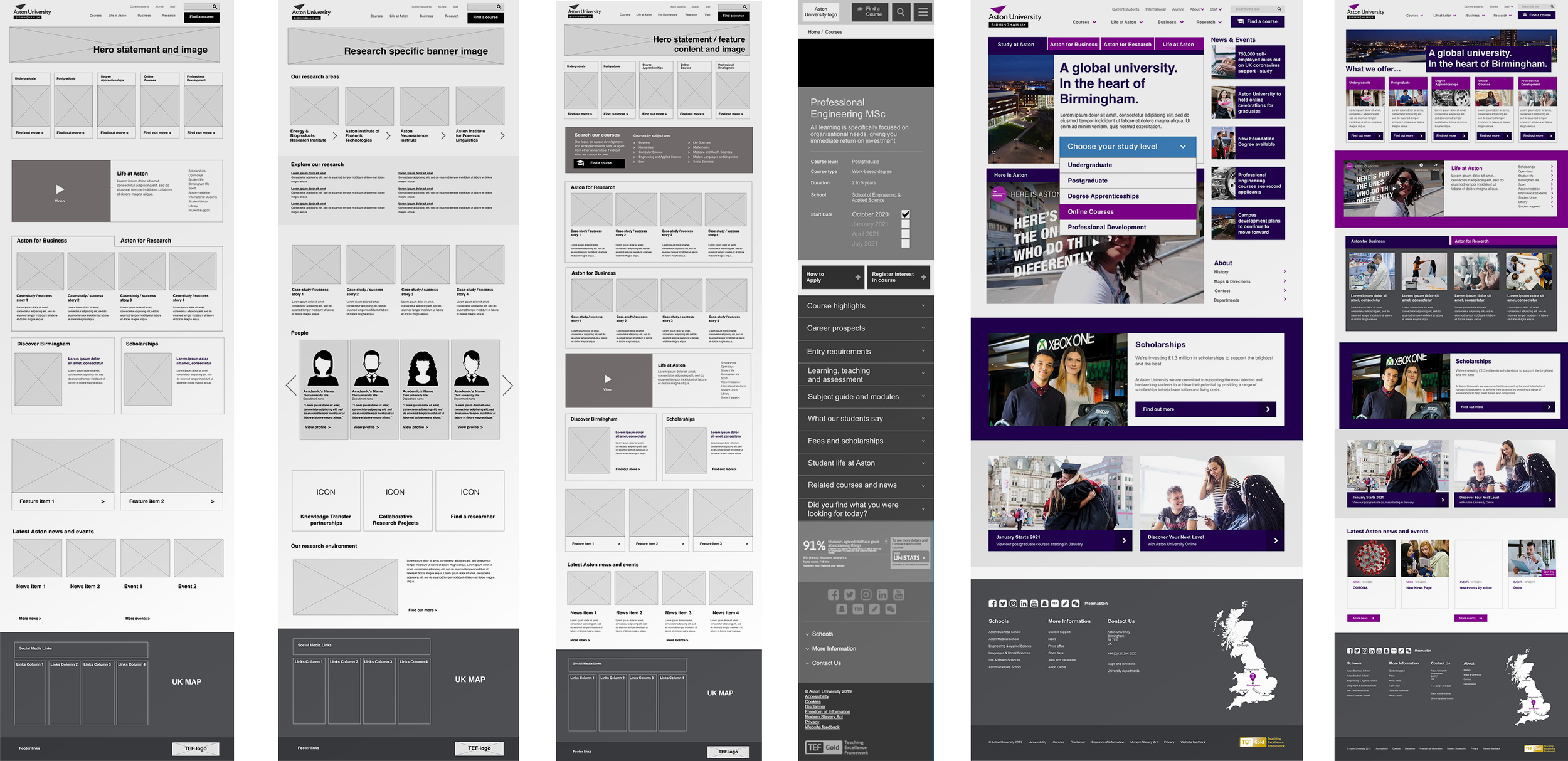Developing a comprehensive content strategy for Aston University
The challenge:
Aston University recognised the need to enhance its website during a major migration to a new CMS, focusing particularly on its "study" and "research" sections.
They aimed to develop a comprehensive content strategy that would align with their identity as a distinctive, research-intensive, business-focused, and diverse institution. The university also sought to improve website structures for efficiency and establish new workflows and governance processes for successful long-term management.
The goal was to ensure the new website met the diverse needs of its audience and integrated seamlessly with other communication channels.
What we delivered:
Despite challenges posed by the pandemic, we embarked on an extensive project that involved a detailed review of Aston University's existing activities, stakeholder consultations with around 40 senior figures, and performance assessments of the current website using tools like Google Analytics and user testing. These efforts led to a robust content strategy that included:
A new content vision and principles reflecting the university's brand and values.
Recommendations for website structure, tested with key user groups, and a new website taxonomy.
Development of governance models and workflow processes to sustain future content creation and management.
Strategic insights from audience research and competitor analysis, guiding the creation of targeted content for key audiences and innovative digital practices. This comprehensive approach provided Aston University with the tools and strategies necessary to enhance their web presence and effectively communicate their distinctiveness to a diverse audience base.
Sample wireframes and website mocks developed as part of our deliverables
“The approach of the team at Pickle Jar was to ensure a clear line of sight in developing our content strategy to Aston University’s overall 2020 – 2023 strategy. This involved stakeholder interviews with senior stakeholders in the University, and we were very confident for the Pickle Jar team to engage with our most senior colleagues to deliver this.
We are now in the stage of final implementation, with the Pickle Jar team helping us with our plans for articulating the content strategy to colleagues across the University, and our ongoing governance to ensure the strategy is delivered at all touchpoints with all of our audiences. We will shortly be re-running the website performance review element of the project, to measure how successful this has been to date.”
~ Fiona Kilker, Director of Marketing at Aston University
Wondering whether your institution might benefit from a content strategy?
If you’d like to find out more about how we can help you to develop a content strategy that can enhance your website, drop us a line, we’d love to hear from you.


